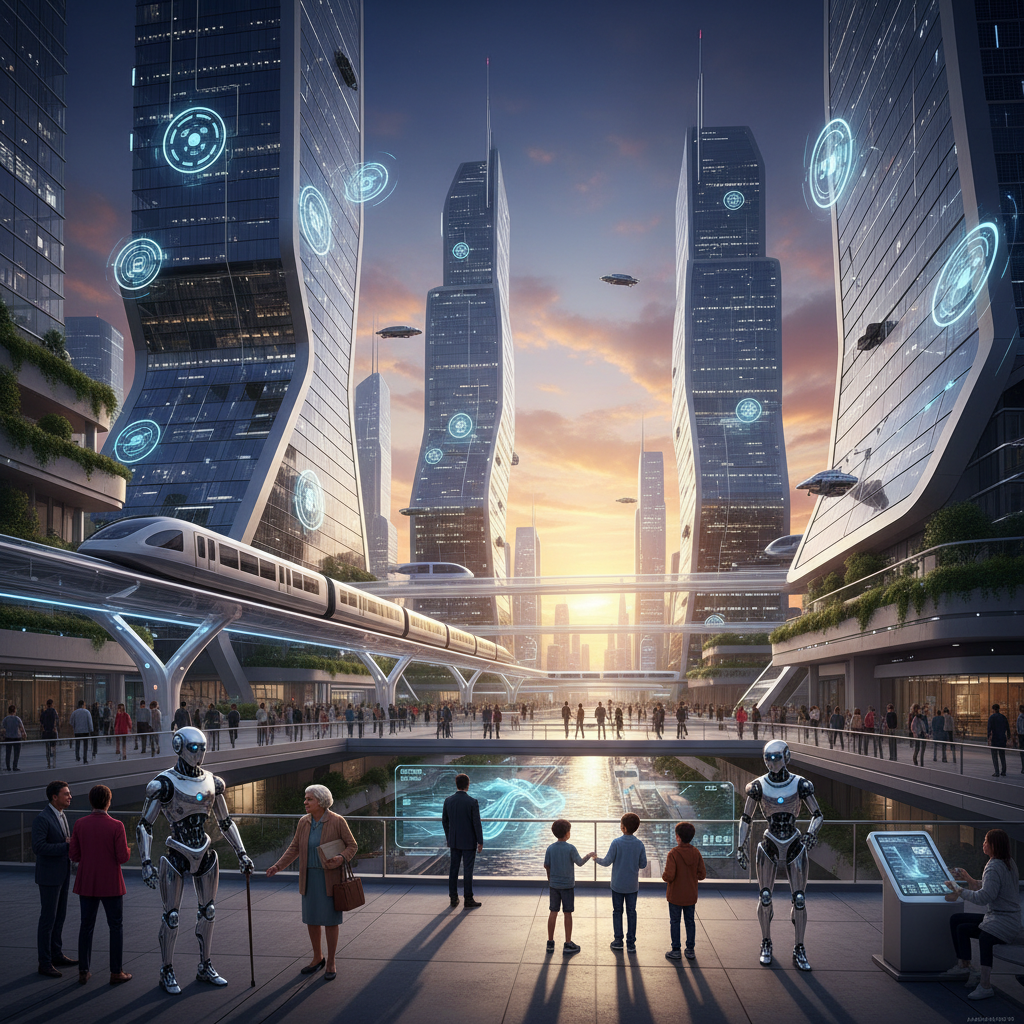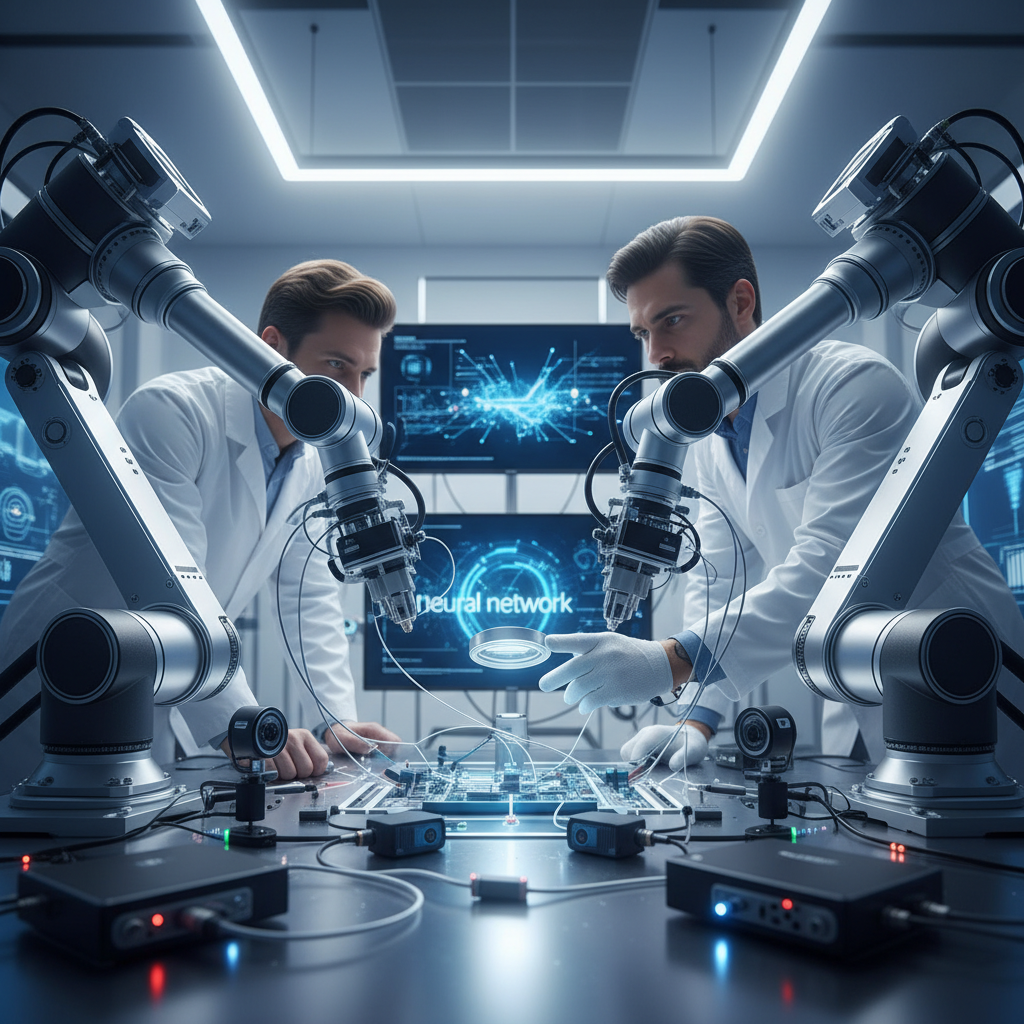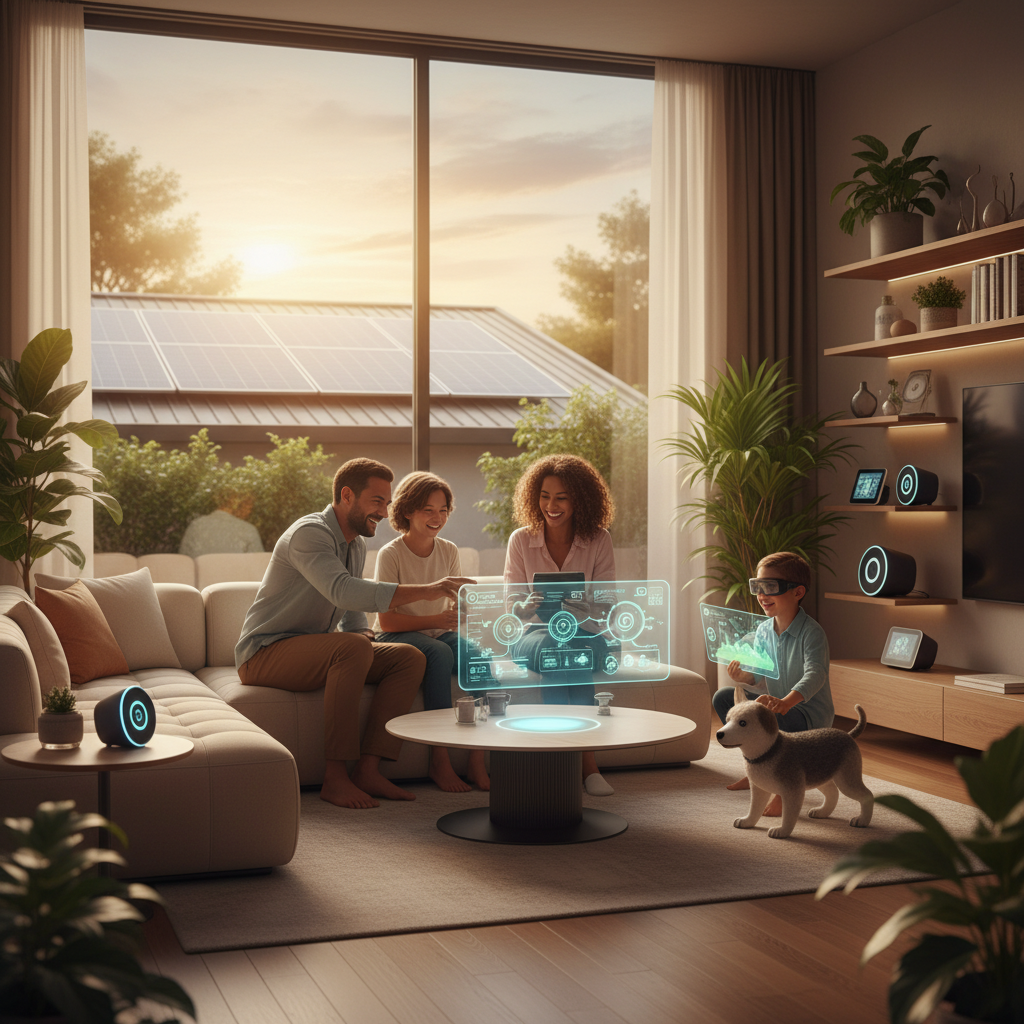
Table of Contents
Introduction
In a world where technology evolves at lightning speed, staying informed about the latest advancements is no longer just an advantage—it’s a necessity. As we approach 2025, the landscape of technology promises to transform the way we live, work, and interact more profoundly than ever before. Imagine a future where artificial intelligence seamlessly integrates into everyday tasks, smart cities optimize resources in real time, and connectivity speeds reach unprecedented heights. This is not science fiction; it’s the near future unfolding before us, and understanding these trends is key to thriving in a rapidly changing environment.
The significance of keeping pace with technology trends extends beyond mere curiosity. For businesses, governments, and individuals alike, these innovations represent both opportunities and challenges that will shape economic growth, societal progress, and personal well-being. According to industry forecasts, global investments in emerging technologies like AI, IoT, and robotics are expected to surge dramatically in the next few years, signaling widespread adoption that will influence everything from healthcare to transportation.
Consider the immense impact of artificial intelligence advancements alone. By 2025, AI is projected to enhance automation in workplaces, improve healthcare diagnostics, and enable smarter devices that anticipate user needs. This rapid development raises important questions about ethics, security, and the future of work—topics that everyone must be aware of. Additionally, the integration of the Internet of Things (IoT) promises a more interconnected world where everyday objects communicate to create intelligent environments, optimizing energy consumption and improving safety.
With so many transformative technologies on the horizon, it’s natural to feel overwhelmed about what to focus on and how these changes might affect your life or organization. Whether you are a tech enthusiast eager to explore new gadgets, a professional preparing for industry shifts, or a curious individual wanting to understand technological impacts, staying ahead with the trends of 2025 will empower you to make informed decisions. Familiarizing yourself with these innovations now allows you to anticipate opportunities, mitigate risks, and participate actively in the digital future.
What You’ll Learn in This Guide
This comprehensive guide will provide an in-depth look at the major technology trends expected to dominate 2025. We will explore how these advancements impact various aspects of our lives and society, giving you the knowledge needed to navigate the upcoming changes confidently.
- Artificial Intelligence and Machine Learning Advancements: Discover next-generation AI innovations, including improved natural language processing, AI-driven automation across industries, and the growing focus on ethical AI to mitigate bias and ensure fairness.
- Internet of Things (IoT) Expansion and Integration: Learn how IoT devices are becoming smarter and more interconnected, transforming smart cities, homes, and transportation, while also addressing critical security challenges and advancements in IoT cybersecurity.
- Emerging Technologies in Robotics and Automation: Explore how robotics is revolutionizing manufacturing, healthcare, and service sectors through robotic process automation (RPA) and next-generation robots designed for tasks ranging from customer service to surgery.
- Advances in Connectivity: 5G, 6G, and Beyond: Understand the shift from 5G to 6G technology, its implications for faster data speeds, lower latency, and enabling immersive experiences like augmented and virtual reality, along with the growth of smart city infrastructure.
As we delve deeper into these trends, we’ll unpack the technological breakthroughs, practical applications, and societal impacts that are shaping the future. Each section will provide detailed insights into how these innovations intersect and what they mean for industries, consumers, and everyday life. Beyond the technology itself, we will also consider the ethical, security, and sustainability questions that accompany this rapid transformation, ensuring a holistic understanding of the digital era.
By the end of this guide, you will not only be up-to-date with the latest tech trends but also equipped to leverage this knowledge for personal growth, business strategy, or informed citizenship. We aim to demystify complex technologies and present them in accessible terms so you can confidently engage with the future. The journey to 2025 is an exciting one, full of potential and promise—let’s explore it together.
Now that you have a roadmap of what’s ahead, it’s time to dive into the specifics of each technological advancement and understand their real-world impact. From AI innovations revolutionizing industries to the expansion of IoT creating smart environments, the following sections will guide you through the transformative power of technology. Whether you’re planning to adopt new tools, adapt to changes, or simply stay informed, this guide is your key to understanding how technology will shape our lives in 2025 and beyond.

As we move further into 2025, technology continues to evolve at a breakneck pace, transforming the way we live, work, and interact. This ongoing evolution demands that we stay informed about the trends shaping the future to seize opportunities and navigate challenges effectively. Building on the introduction, this discussion delves deeply into two critical technology trends: the advancements in Artificial Intelligence (AI) and Machine Learning, and the expansive integration of the Internet of Things (IoT). These areas promise to redefine industries, enhance daily conveniences, and introduce new complexities in security and ethics that everyone should understand.
Artificial Intelligence and Machine Learning Advancements
The realm of AI and Machine Learning is undergoing revolutionary changes in 2025, driven by innovations that push the boundaries of what machines can understand and achieve. AI technologies are no longer confined to isolated functions but are becoming integral across multiple sectors such as healthcare, finance, manufacturing, and entertainment. These advancements enable more intuitive human-computer interactions and bolster automation capabilities, significantly impacting workplace productivity and personal convenience. Understanding these developments is essential, especially as ethical considerations gain prominence, ensuring AI systems serve humanity fairly and responsibly. To fully grasp this concept, it helps to understand the foundational aspects of AI technologies and their applications across industries.
One of the key breakthroughs in AI involves enhanced natural language processing (NLP) that allows machines to comprehend, generate, and respond to human language with unprecedented accuracy and fluidity. This leap paves the way for more sophisticated conversational AI systems, virtual assistants, and customer service bots. Additionally, AI-driven automation is transforming workplaces by taking over routine tasks, optimizing workflows, and enabling employees to focus on more strategic and creative functions. However, alongside these benefits come challenges related to bias mitigation, transparency, and ethical AI, all of which are receiving increased research attention to build trust and inclusivity in AI applications.
Key Aspects of AI and Machine Learning Advancements
Several fundamental elements define the landscape of AI and Machine Learning in 2025, shaping its impact and practical use:
- Improved Natural Language Processing (NLP): This allows for better understanding of contextual nuances and emotions in human language, enhancing interaction quality in chatbots and virtual assistants, making them more helpful and engaging.
- AI-Driven Automation: Automation now extends beyond simple repetitive tasks to complex decision-making processes, boosting efficiency in sectors like manufacturing, banking, and logistics, and freeing human labor for tasks requiring emotional intelligence and creativity.
- Ethical AI and Bias Mitigation: As AI systems influence critical decisions, efforts to detect and reduce biases are vital. Technologies and frameworks designed to ensure fairness and accountability are becoming standard practice in AI development.
- AI in Personal and Healthcare Applications: AI is embedded in smart devices and health monitoring tools, helping individuals manage daily activities, improve wellness, and support medical diagnostics through predictive analytics and personalized care recommendations.
Internet of Things Expansion and Integration
The Internet of Things (IoT) is expanding its reach exponentially in 2025, with billions of connected devices creating an intelligently networked environment. This trend is manifesting in smart cities, homes, industries, and transportation systems, delivering enhanced convenience, efficiency, and sustainability. The integration of IoT with AI and edge computing is enabling real-time data processing and decision-making locally, reducing latency and increasing system reliability. This interconnected web brings immense benefits but also introduces critical security vulnerabilities that must be addressed proactively.
In smart cities, IoT technology manages energy consumption in buildings, optimizes public transportation, and improves traffic flow, significantly reducing environmental footprint and enhancing residents’ quality of life. Smart homes are becoming more energy-efficient and responsive, adjusting lighting, climate, and security systems based on occupant behavior. However, as networks grow, the surface for cyber threats expands, demanding innovations in IoT security. Solutions such as decentralized architectures, AI-based threat detection, and stringent authentication protocols are evolving to safeguard these complex ecosystems. For those interested in how IoT is transforming urban and home environments, understanding these developments is crucial to appreciating both the opportunities and challenges of connected living.
Important Considerations for IoT Expansion and Integration
Key factors influencing the growth and safe deployment of IoT devices emphasize technology, security, and sustainability:
- Energy-Efficient Smart Cities and Buildings: IoT-enabled infrastructures use sensors and automation to reduce energy waste, optimize resource allocation, and promote environmental sustainability in urban settings.
- Connected Transportation and Traffic Systems: Vehicles and traffic management systems communicate to enhance safety, reduce congestion, and support electric and autonomous transportation innovation.
- Emerging Security Threats: The proliferation of IoT devices increases vulnerabilities, including unauthorized access, data breaches, and device manipulation, posing risks to privacy and operational integrity.
- Innovations in IoT Cybersecurity: Adaptive security measures, such as AI-driven anomaly detection and blockchain for device authentication, are being implemented to protect networks and user data from evolving threats.

